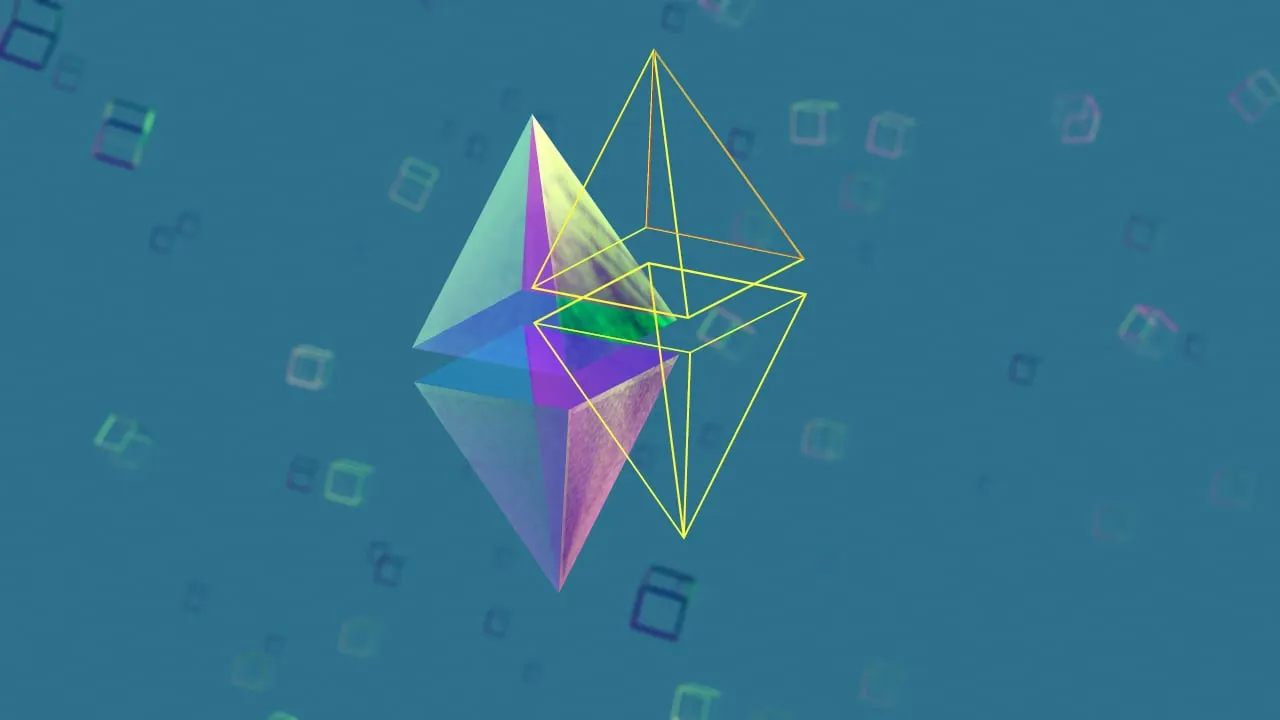The crypto zeitgeist evolves so quickly that Ethereum’s so-called merge feels like forever ago. But it’s been exactly one year since the network fully transitioned to using proof of stake and there have been notable shifts since the change.
In terms of Ethereum’s price, not much may appear to have changed since last September. A day before the transition took place, ETH traded hands at around $1,600—approximately the same price it’s trading at a year later.
However, under the hood and on-chain, there have been substantial developments, whether that’s a decrease in Ethereum’s overall supply or a sharp increase in the amount of Ethereum that’s staked, just to name a few.
Energy Consumption
Prior to the shift, Ethereum verified on-chain transactions with the same consensus mechanism as Bitcoin: proof of work. It requires miners to compete to solve complex mathematical equations. In exchange for participating in the energy-intensive process, they earn rewards.
But when Ethereum shifted to proof of stake, it meant validators, not miners, needed to pledge Ethereum to secure the network in exchange for rewards. One of the most notable impacts was a reduction in Ethereum’s energy use. The network’s carbon footprint shrank by 99.99%, according to a report from the Crypto Carbon Ratings Institute.
Crypto has garnered a mainstream reputation for consuming lots of energy. And Canadian investor Kevin O'Leary is among those who have highlighted ESG concerns as one of the main things holding crypto adoption back. Financial institutions from BlackRock to Fidelity have caught flack for crypto moves due to environmental concerns with crypto as well.
It’s significant that the merge rendered those anti-crypto criticisms moot for the industry’s second-largest coin, Dermot O'Riordan, director of the Pocket Network Foundation told Decrypt.
“People were like, ‘This seems fun and cool, but you’re all bucking around while the Earth is burning,” he said. “It was a genuine drag on the believability and credibility of the technology.”
Liquid Staking
Since Ethereum’s transition, the amount of Ethereum staked has nearly doubled. The total has grown 93% to 26.5 million Ethereum worth close to $43 billion, according to a dashboard on Dune created by Dragonfly Data Scientist Hildebert Moulié. That equates to one out of every five Ethereum.
At the same time, centralization and censorship concerns have been raised in the upgrade’s wake. That’s because people fear control over verifying the network’s transactions could become isolated in the hands of a few, whether that’s a firm like an exchange or projects that make it easier for users to pool funds together and earn staking rewards.
Ahead of the merge, some were particularly concerned about exchanges like Coinbase becoming involved in staking due to U.S. sanctions against Tornado Cash, the coin-mixing service. The worry that centralized entities would censor transactions to stay compliant made decentralized applications like Lido Finance a better bet in terms of decentralization.
However, the heavy use of Lido, a liquid staking solution, has garnered particular attention as of late. It’s now been identified as a potential weak point for Ethereum’s ecosystem in terms of decentralization because Lido now supports 32% of all Ethereum staked, according to Moulié’s dashboard.
When it comes to liquid staking tokens, Lido Staked Ethereum ($STETH) looms large, with a market capitalization of $14 billion, according to CoinGecko. For reference, the second largest token by market capitalization representing staked Ethereum is Rocket Pool ETH ($RETH), with a market capitalization of $926 million.
Despite concerns, O'Riordan noted that liquid staking tokens have been a major source of growth for decentralized finance.
Liquid staking enables Ethereum holders to pledge their tokens for a reward, and still be able to leverage the value of that Ethereum with a respective token that’s issued and pegged to its price. Even though decentralized exchanges have seen a dip in value for associated assets since the merge, liquid staking continues to flourish.
When the merge took place, there wasn’t a way for people to withdraw staked Ethereum, making services like Lido especially attractive. But Ethereum’s Shanghai upgrade in April enabled staking withdrawals, effectively sealing the network’s transition to proof of stake.
Scaling Solutions
In order for Ethereum to achieve significant adoption, the network needs to be able to process lots of transactions in a timely way—so the logic goes.
The merge wasn't intended to improve Ethereum’s speed, and as a result, Ethereum’s average transactions per second has mostly hovered in the teens since last September, according to the analytics site L2 Beat. Still, it set the stage for what’s next.
The “surge,” a suite of upgrades slated to follow the merge, is expected to improve Ethereum’s scalability, according to a vision for Ethereum’s roadmap articulated by co-founder Vitalik Buterin ahead of the merge last July.
However, scaling solutions that seek to address Ethereum’s current limitations have also become more present in crypto. Average transactions per second between all Ethereum layer-2 networks has now surpassed 50, a significant improvement from last year, according to L2 Beat.
When combined, the total number of transactions over the past 30 days for popular layer-2 networks zkSync Era, Optimism, and Arbitrum Nova totals over 61 million. That’s twice the number of transactions on Ethereum during the same span.
The recent proliferation of layer-2 tech is partly due to a foundation the merge created in terms of security at Ethereum’s base level, Nebojsa Urosevic, co-founder of infrastructure solutions provider Tenderly told Decrypt.
“The merge indeed laid foundational bricks for further scalability enhancements,” he said. “Post-merge, we've seen a bolstered commitment to layering approaches, with layer-2 solutions coming to the forefront.”
The SEC
Meanwhile, staking has emerged as a regulatory flashpoint in the U.S., where the Securities and Exchange Commission (SEC) has gone after several crypto exchanges for offering services to help users earn network rewards.
Kraken's settlement with the SEC in February, involving a $30 million fine, stemmed from allegations that its staking-as-a-service program constituted an unregistered securities offering. Similar claims were raised against Coinbase and Binance in lawsuits over their respective staking products.
While the SEC has ensnared several tokens in its lawsuits against Binance and Coinbase, alleging they are examples of unregistered securities, some have noticed and questioned why the regulator hasn’t called out tokens that use proof of work as illicitly issued assets.
But U.S. regulators are still at odds over how to classify Ethereum. The result is an apparent turf war between two of the largest financial watchdogs: The SEC and Commodity Futures Trading Commission (CFTC).
CFTC Chairman Rostin Behnam said Ethereum is a commodity in March. A month before, SEC Chair Gary Gensler had suggested that “everything but Bitcoin” is a security, and then he sidestepped questions regarding Ethereum in April.
Supply & Direction
Another notable impact the merge has had on Ethereum is a decrease in the token’s overall supply. The way the shift has changed how new Ethereum is issued versus how often it's removed from circulation—a process known as burning—has resulted in a 0.25% decrease in the total amount of Ethereum in circulation, according to sound.money.
In retrospect, the merge may seem like a footnote in crypto’s history books compared to the turbulence and corporate blow-ups that defined crypto markets in 2022. But in terms of the future, O'Riordan compared it to a beacon that illuminates Ethereum’s overall direction.
“There’s a renewed belief in confidence that Ethereum can actually pull off these major technical upgrades and do ambitious things,” he said. “While Ethereum can be slower than we’d all like it to be, it’s ultimately moving forward and staying true to its values at the same time.”
Developers have been hammering out plans for one of Ethereum’s next big upgrades, dubbed “Dencun,” core developer Mario Havel told Decrypt in July. It includes the introduction of a feature called proto-danksharding, which is expected to scale Ethereum to over 100,000 transactions per second once it’s fully realized.
Other features in the works, such as account abstraction, would effectively make managing a crypto wallet as easy as managing an email account. And earlier this month Buterin talked about a feature called stateless clients, which would make running Ethereum nodes on smartphones feasible down the line.

